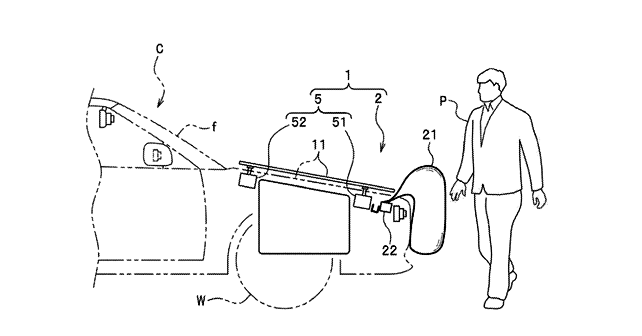
Honda's pedestrian crash protection system seems to offer some clever ways of minimising injuries caused to pedestrians, cyclists, and motorcyclists.
The concept of exterior airbags on a car is something that's been under development for quite some time now. Global technology firm and automotive supplier, ZF, showcased the first-ever pre-crash inflating external side airbag in 2018. However, airbags and other safety equipment, such as seat belts and crumple zones, largely focus on protecting the occupants inside the vehicle. The rate of development of standard airbags is simply higher than that of exterior airbags.
But now, as global safety norms are becoming more stringent, the focus has shifted from protecting just the vehicle occupants to protecting those who are outside the vehicles – pedestrians, cyclists or motorcyclists.
On this front, we've managed to source some interesting patent drawings filed by Honda that demonstrate multiple systems that can be employed to protect those who suffer an impact with a moving vehicle. The drawings represent several scenarios wherein a vehicle either collides with an adult/child pedestrian or with a cyclist/motorcyclist. In all cases, the vehicle seems to be fitted with a barrage of sensors that ensure rapid deployment of the airbag located between the car's grille and bonnet.
In some cases, such as those involving a child pedestrian, the exterior airbag seems to inflate as per the pedestrian's size. This could indicate a dynamic inflation system, which allows the car's sensors to quickly scan the size of the obstacle ahead and deploys the airbag accordingly, to ensure the maximum surface area of the pedestrian comes in contact with the airbag's surface.
In another drawing, the exterior airbag system has been modified to cocoon the pedestrian, once he/she hits the vehicle and flips onto the bonnet. This is another clever method to ensure the pedestrian does not suffer any injuries from a secondary impact (an impact after hitting the vehicle).
The exterior safety system also seems to focus on ensuring that the pedestrian or cyclist/motorcyclist flips onto the car's bonnet post the impact, instead of going under the vehicle. We can even spot the presence of some movable panels, like the bonnet, that can alter its angle to cushion the blow.
Of course, to make sure such a system works at its best, a car needs to be fitted with a host of sensors, which again highlights the fact that modern cars will require computers of ever-increasing complexity. While such complex systems may be able to survive in clean, dust-free areas, their reliability and prolonged functioning are highly suspected in countries like India.
Read more:




























Write your Comment